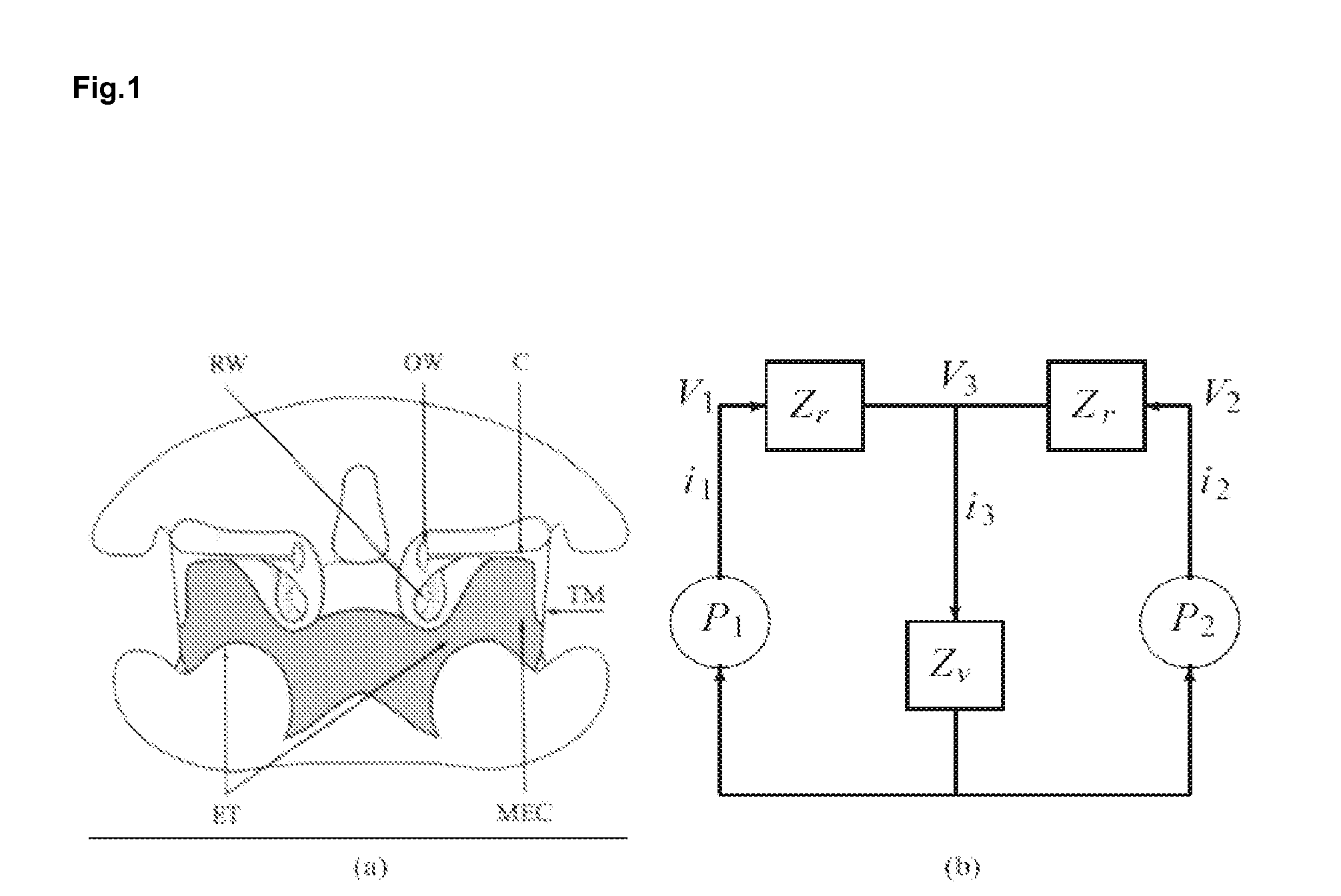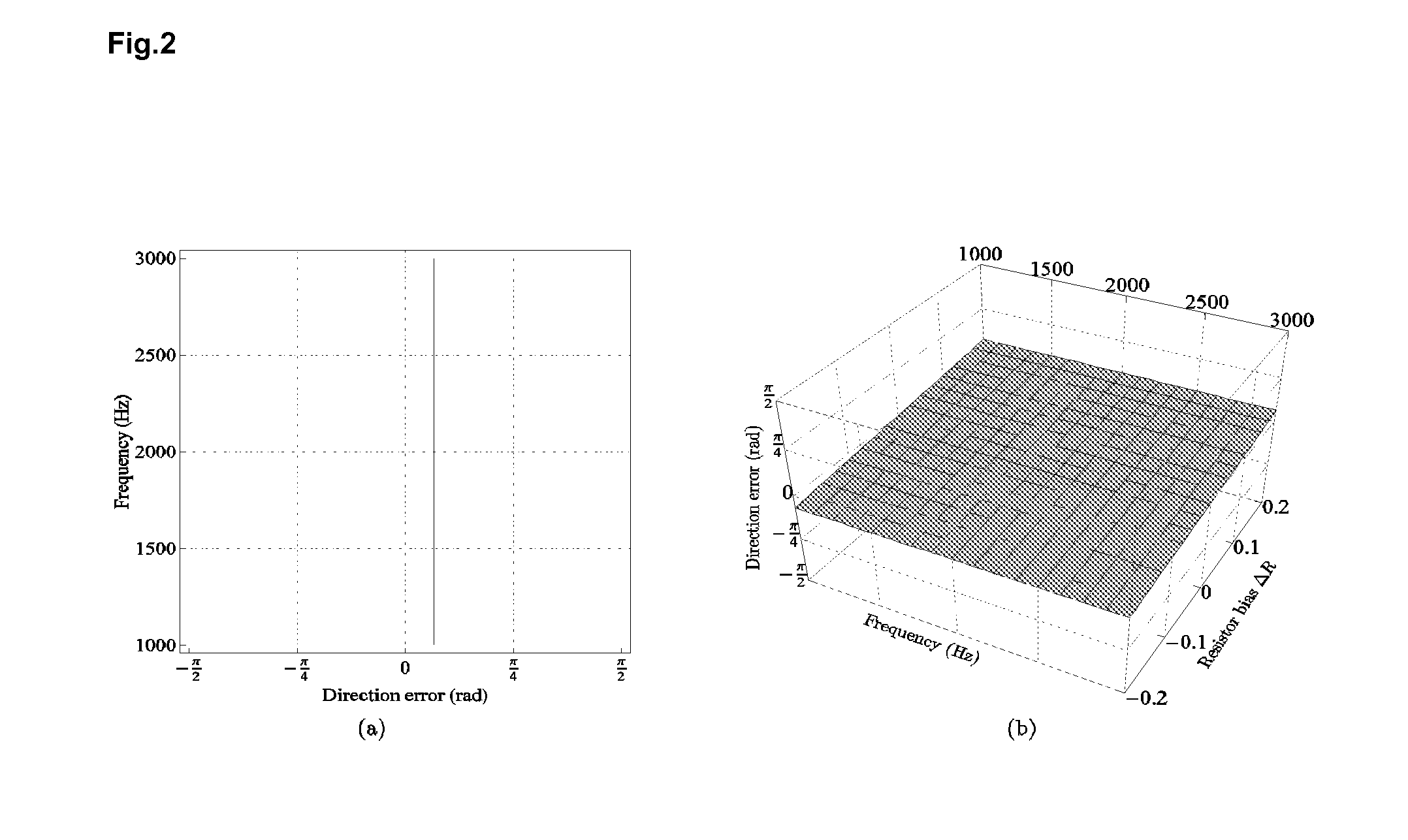Sound localizing robot
a robot and sound technology, applied in the field of robots, can solve the problems of model producing localization errors and bias reducing the useful bandwidth of localization, and achieve the effect of enhancing auditory localisation cues
- Summary
- Abstract
- Description
- Claims
- Application Information
AI Technical Summary
Benefits of technology
Problems solved by technology
Method used
Image
Examples
example
[0052]In the model shown in FIG. 1b, P1 and P2 are used to simulate the sound pressure to the tympanums. They are represented by voltage input V1 and V2. The currents i1 and i2 are used to simulate the vibration of the tympanums. Base on the model shown in FIG. 1b,
{i1=G11·V1+G12·V2i2=G21·V1+G22·V2(1){G11=Z1+Z3Z1Z2+Z1Z3+Z2Z3G12=G21=-Z3Z1Z2+Z1Z3+Z2Z3G22=Z2+Z3Z1Z2+Z1Z3+Z2Z3(2)
[0053]In Eq.1, G11 and G22 are the ipsi-lateral filters and G12 and G21 are the contra-lateral filters. The currents i1 and i2 are related to both V1 and V2. This is similar to the structure of the lizard ear. The model asserts that the sound comes from the louder side, means with bigger current's amplitude. If the amplitude of the two currents are identical, the model affirm that the sound comes from in front. We assume that the model is used to control a robot. So the robot will turn to the louder side. Otherwise it will go forward. In the simulation,
{V1=sin(ω(t+Δt))V2=sin(ω(t-Δt))(3)
2Δt is the time delay betwee...
PUM
 Login to View More
Login to View More Abstract
Description
Claims
Application Information
 Login to View More
Login to View More - R&D
- Intellectual Property
- Life Sciences
- Materials
- Tech Scout
- Unparalleled Data Quality
- Higher Quality Content
- 60% Fewer Hallucinations
Browse by: Latest US Patents, China's latest patents, Technical Efficacy Thesaurus, Application Domain, Technology Topic, Popular Technical Reports.
© 2025 PatSnap. All rights reserved.Legal|Privacy policy|Modern Slavery Act Transparency Statement|Sitemap|About US| Contact US: help@patsnap.com



